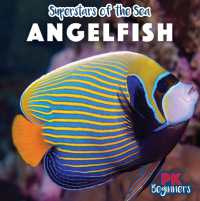- ホーム
- > 洋書
- > 英文書
- > Business / Economics
Full Description
Wind power is widely regarded as a key component of an environmentally sustainable, low-carbon energy future because it is renewable, requires almost no water, and generates near-zero emissions of greenhouse gases and other pollutants. Nonetheless, wind power development can involve significant environmental and social impacts that need to be fully recognized and appropriately managed. Of particular concern are (i) biodiversity-related impacts upon birds, bats, and natural habitats; (ii) visual impacts, noise, radar and telecommunications interference, and other local nuisance impacts; and (iii) land acquisition, benefits-sharing, indigenous communities, and other socio-economic and cultural issues. This book, Greening the Wind: Environmental and Social Considerations for Wind Power Development in Latin America and Beyond, describes the key environmental and social impacts that are associated with large-scale, grid-connected wind power development. It builds upon recent World Bank experience with wind power development in Latin America and other regions where wind power is growing rapidly. The book describes good practices and provides advice for the planning, construction, and operation of land-based wind power projects in ways that can (i) avoid significant harm to birds, bats, and natural habitats; (ii) manage visual and other local impacts in ways acceptable to most stakeholders; and (iii) effectively address compensation, benefits-sharing, and socio-cultural concerns. It provides information to enable wind project investors and operators, governments, development organizations, researchers, NGOs, and others to support wind power with reduced adverse environmental and social impacts—thereby enhancing the long-term sustainability of this renewable energy technology. Specific chapters cover (i) key characteristics and trends in wind power development; (ii) making wind power safer for biodiversity; and (iii) addressing the social impacts of wind power development.








